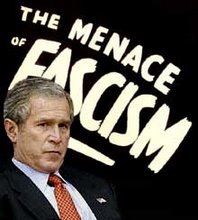This is a sad, if not maddening state of affairs, not to mention highly symbolic of the Bush years.
Los Angeles Hospital to Close After Failing Tests and Losing Financing
LOS ANGELES, Aug. 10 — Martin Luther King Jr.-Harbor Hospital, built in the aftermath of the Watts riots and one of the few hospitals serving the poorest residents of South Los Angeles, is headed for closing after federal regulators found Friday that it was unable to meet minimum standards for patient care.
That verdict, the culmination of more than four years of federal and local scrutiny over patient deaths attributed to poor care, will result in the loss of $200 million in federal support, half the budget for the hospital, a county facility.
In a letter to the hospital administrator, federal officials from the Centers for Medicare and Medicaid Services said that “repeated certification surveys and complaint investigations have identified serious health and safety violations and documented the hospital’s inability to comply with these federal standards.”
At a news conference Friday, county officials said the hospital would probably close within two weeks, after patients were moved to other hospitals. All 911 calls will direct ambulances to one of the nine other hospitals in South Los Angeles. An urgent care center will operate on the site 16 hours a day.
The hospital, which has gone through years of turmoil, has had a contingency plan in place to accommodate its patients in the event of a loss of financing. County leaders said Friday that they could also try to find a private operator to take over the hospital and try to reopen it within 15 months.
But local officials worried about the uncertainty and the loss of the hospital for residents of the Watts/Willowbrook area of Los Angeles.
“They are going to be left without a safety net for health care,” said Janice Hahn, a Los Angeles city councilwoman whose district includes Watts. “There will be no trauma care, no emergency care and a lack of the basic services this community needs and deserves.”
In recent years, the hospital had come under intense scrutiny after the deaths of many patients that officials attributed to poor care by nurses and other staff members, and it has been out of compliance with Medicare standards since 2004. Los Angeles County public health officials recently found low levels of radioactive material on a diaper discarded from a patient in the intensive care unit.
The center attracted national attention in May after a homeless patient who had come through the emergency room collapsed on the floor, screaming in pain, but got no response from employees. A janitor mopped up around the patient as she vomited blood. She later died.
The center had been anxiously awaiting a verdict about its status from the Centers for Medicare and Medicaid Services, which had recently inspected it. On Friday, the widely anticipated but deeply feared decision came: the hospital had failed 8 of the 23 conditions of compliance with the federal government and thus did not meet the standards to receive financial support.
“This was a make-or-break inspection,” Bruce Chernof, the director and chief medical officer of the Los Angeles County Department of Health Services, said at a news conference Friday. “And what this decision means in plain English is that the hospital’s Medicare contract will terminate next Wednesday. I speak on behalf of the entire Department of Health Services when I say how disappointed we all are that the hospital failed to meet national standards of care despite the best efforts of hundreds and hundreds of dedicated people”
Nearly since its opening 35 years ago in Willowbrook in South Los Angeles, the center has been a symbol of both the political neglect of South Los Angeles and its struggle to emerge from blight.
It pointed to many successes — it was once a teaching hospital for the nearby Charles R. Drew University of Medicine and Science and featured a respected neurosurgery unit — and in a neighborhood riddled with gang violence and myriad health problems common to poor urban areas, it was a safety net, though an increasingly imperfect one, for the poor and uninsured. The nearest public center is several miles away, which, in an area with many poor residents without cars, means nearly inaccessible.
Debates over the hospital’s future have always been tangled in racial politics. “It is actually quite tragic that this hospital that came into existence with such high expectations now dies because of the culture of incompetence,” said Joe R. Hicks, vice president of Community Advocates Inc., a Los Angeles research group. “It suffered what has often been called the soft bigotry of low expectations, because the Board of Supervisors were aware that the hospital was being nicknamed killer king by people who lived in the neighborhood and they continued to hide the ball.”
Others echoed the criticism. “The Board of Supervisors failed to put enough money and personnel into the hospital,” said Earl Ofari Hutchinson, a Los Angeles political commentator. “And now,” he said, “we are asking the question we always ask: Where are all these people going to go?”
County supervisors have ranged from defending the center to calling for its closure. “What a tragedy it is that this hospital has been able to function on such a substandard level as it has,” said Tony Bell, a spokesman for Michael D. Antonovich, a Los Angeles County supervisor who has supported the closing.
On Friday, hospital workers anxiously awaited news of their fate.
“Everyone is just worrying here,” said Maria Carro, a clerk in the emergency medicine department. “This hospital is very important to our community, and we don’t know what’s going on with patients, we don’t know what’s going on with employees. We don’t know anything.”
(In accordance with Title 17 U.S.C. Section 107, this material is distributed without profit to those who have expressed a prior interest in receiving the included information for research and educational purposes. I.U. has no affiliation whatsoever with the originator of this article nor is I.U endorsed or sponsored by the originator.)
The Nazis, Fascists and Communists were political parties before they became enemies of liberty and mass murderers.



No comments:
Post a Comment